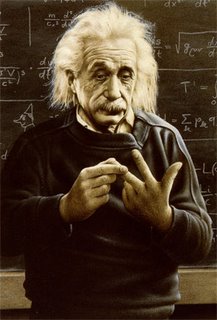Technology, Teaching, and Multiple Intelligences

Alan November makes the claim that as instructional technology has exploded over the last quarter-century, so has our scientific understanding of intelligence. From Binet's understanding of a measurable, finite capacity to read and calculate one-hundred years ago through Piaget's discoveries of cognitive development and ultimately the symbolic systems approach of the late 1900s, we have continued to grow in our understanding of...well...understanding! Ironically, as our understanding of human cognition has become more sophisticated, our willingness and ability to measure it as a known quantity has declined proportionately.
While psychometric testing continues to play an important role in education and psychology, we now understand that it is no longer the sole measuring stick of intelligence. At the dawn of the new information age, Howard Gardner’s description of intelligence as posited in his 1983 book, Frames of Mind, provides us with a good, working definition of human cognition as we know it today:
“The ability to solve problems and create products which are of value in one’s own culture.”
Consider the implications for this simple statement. Intelligence is no longer how closely a subject can approximate the correct answers on a norm-referenced test (e.g., TAKS, TASP, SAT, ACT, etc.). Intelligence now refers to all the possible approaches to productive activity which meaningfully contribute to society. For example, a learner may fail to achieve on an instrument measuring verbal and mathematical aptitude, but may be able to express ideas and find solutions using other facilities that are intelligence strengths: visual, musical, kinesthetic, naturalist, interpersonal, intrapersonal and existential. This notion much more closely approximates the standards society has for productive workers in today's age of WIKI (What I Know Is ) and continuously shared information.
But not all workers are writers or scientists. Everyone can make a positive contribution. This day and age many of our most valued thinkers and artists are those who do so “outside the box” --the box being the traditional concept of intelligence formulated primarily in the 20th Century. The implications go beyond what is immediately evident, though. Gardner’s definition is not simply a succinct statement of human intelligence. Look at his definition again and consider it as a definition of artificial intelligence. Does this hit the mark in describing instructional technology as we apply it today?
“The ability to solve problems and create products which are of value in one’s own culture.”
I agree with Alan November's contention that it does, and that the measurement of successful instructional technology today and in the future is how well artificial intelligence accommodates human intelligence. If you accept this premise, then you are ready to begin the discussion of multiple intelligence's theory and its implications for instructional technology. Technology, like education itself, is no longer a one-size-fits-all proposition. Instructional technology succeeds only as much as it helps learners complete real world tasks that mirror the demands of our modern information age society.

